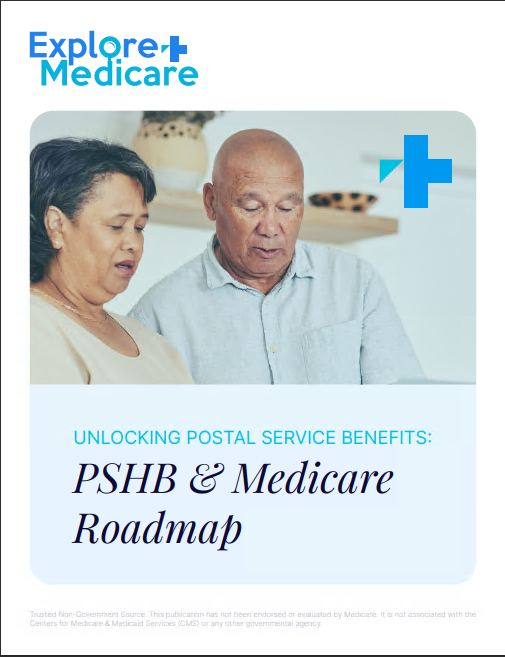Key Takeaways
-
Medicare plans have coverage gaps and cost-sharing requirements that can lead to higher-than-expected out-of-pocket expenses if you’re not careful.
-
Understanding deductibles, copayments, coinsurance, and coverage restrictions can help you avoid financial surprises throughout the year.
Hidden Costs in Medicare Plans You Need to Watch For
Medicare offers essential health coverage, but it doesn’t cover everything. Many enrollees are caught off guard by unexpected out-of-pocket expenses, often because they assume their plan covers more than it actually does. If you’re not careful, you could end up paying much more than you anticipated for medical services, prescriptions, and other healthcare needs.
Understanding Deductibles, Copayments, and Coinsurance
One of the biggest sources of confusion in Medicare plans is cost-sharing. Medicare beneficiaries are responsible for deductibles, copayments, and coinsurance, which can add up quickly if you require frequent medical care.
Deductibles: What You Pay Before Coverage Kicks In
Each part of Medicare has its own deductible. For example, Medicare Part A has an inpatient hospital deductible per benefit period, while Medicare Part B has an annual deductible that resets each year. If you’re not aware of these costs, you might assume your plan pays for services immediately, only to receive a bill later.
Copayments and Coinsurance: Your Share of the Costs
After meeting the deductible, you’re still responsible for a portion of the costs through copayments and coinsurance. Original Medicare covers a percentage of expenses, leaving you to pay the rest. These out-of-pocket costs can vary based on the type of service, provider, and whether your care is considered inpatient or outpatient.
Prescription Drug Coverage Gaps and Out-of-Pocket Costs
Even if you have a Medicare prescription drug plan, you may still encounter high medication costs, especially if you require brand-name or specialty drugs.
The Medicare Part D Out-of-Pocket Cap
As of 2025, there is a $2,000 cap on out-of-pocket prescription drug costs. However, this limit doesn’t mean you won’t face high costs leading up to that threshold. If you take expensive medications, your annual spending on prescriptions can still be significant.
Coverage Restrictions on Certain Medications
Many Medicare drug plans have formularies that categorize medications into different cost tiers. If your medication is in a higher tier, you could pay significantly more. Additionally, prior authorization, step therapy, or quantity limits may apply, delaying or limiting access to certain drugs.
The Impact of Provider Networks on Your Costs
Where you receive care can greatly impact how much you pay. Medicare beneficiaries often assume they can see any doctor, but certain plans limit provider choices.
Original Medicare vs. Medicare Advantage Networks
-
Original Medicare: Allows you to see any provider that accepts Medicare, but you may face higher costs without supplemental coverage.
-
Medicare Advantage: Often includes provider networks, meaning you could pay more for out-of-network services or have limited access to specialists.
Out-of-Network Care Can Be Costly
If you go outside your plan’s network, you could face higher coinsurance, denied claims, or be responsible for the full cost of care. Always check if a provider is in-network before scheduling an appointment.
Preventive Services: What’s Free and What Isn’t
Medicare covers many preventive services, but not everything is free. Some screenings and tests may only be covered under specific conditions.
Annual Wellness Visits vs. Full Physical Exams
Medicare covers an Annual Wellness Visit, which includes a health risk assessment and personalized prevention plan. However, if you request a full physical exam, you may be billed for additional services Medicare doesn’t cover.
Preventive Screenings with Cost-Sharing
While many screenings (such as mammograms and colorectal cancer screenings) are covered, follow-up tests or additional procedures could result in extra costs. For example, if a screening colonoscopy results in polyp removal, you may be billed for part of the procedure.
Emergency Care and Travel Coverage Limitations
Medicare provides essential coverage for emergency care, but certain limitations apply, especially if you travel frequently or need care outside the U.S.
Medicare and Foreign Travel
Original Medicare generally does not cover healthcare outside the U.S., except in very limited circumstances. If you travel internationally, you may need supplemental coverage to avoid paying entirely out of pocket for medical emergencies abroad.
Urgent Care vs. Emergency Care Costs
Medicare covers emergency services, but urgent care visits may come with different cost-sharing requirements. Some plans distinguish between emergency room visits and urgent care centers, leading to different copayment amounts.
Home Healthcare and Skilled Nursing Care Misconceptions
Many Medicare enrollees assume that home healthcare and skilled nursing facility (SNF) care are fully covered, but restrictions apply.
Home Healthcare Limitations
Medicare covers home healthcare only if it’s deemed medically necessary and prescribed by a doctor. Custodial care, such as help with bathing and dressing, is generally not covered.
Skilled Nursing Facility (SNF) Costs
Medicare covers SNF care only if you meet strict eligibility requirements, including a three-day inpatient hospital stay. After a certain number of covered days, daily coinsurance applies, and coverage eventually runs out.
Dental, Vision, and Hearing Coverage Gaps
Original Medicare does not cover routine dental, vision, or hearing services, leading to high out-of-pocket costs for many beneficiaries.
What Medicare Covers
-
Dental: Medicare only covers dental care in very limited cases, such as jaw surgery or hospitalization for an oral condition.
-
Vision: Eye exams for diabetic retinopathy and glaucoma screenings are covered, but routine eye exams and glasses are not.
-
Hearing: Medicare covers diagnostic hearing exams when ordered by a doctor, but hearing aids and routine exams are not included.
If you need routine care in these areas, you will need to explore alternative coverage options or pay out of pocket.
Making Smart Choices to Minimize Unexpected Costs
Being aware of these coverage pitfalls can help you make informed decisions about your healthcare. Regularly reviewing your Medicare plan, understanding cost-sharing, and checking provider networks can prevent costly surprises. Take advantage of Medicare’s open enrollment periods to ensure your coverage meets your healthcare and budget needs.









